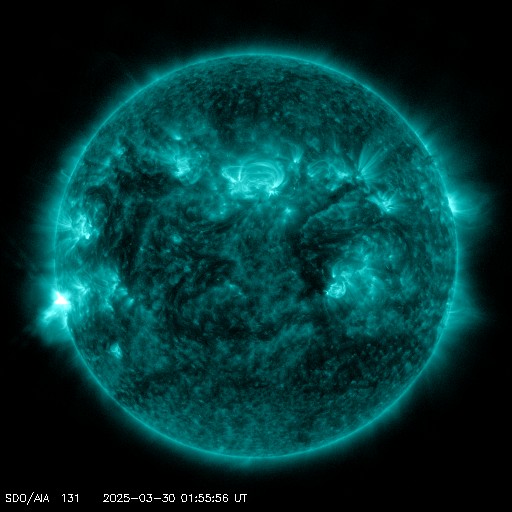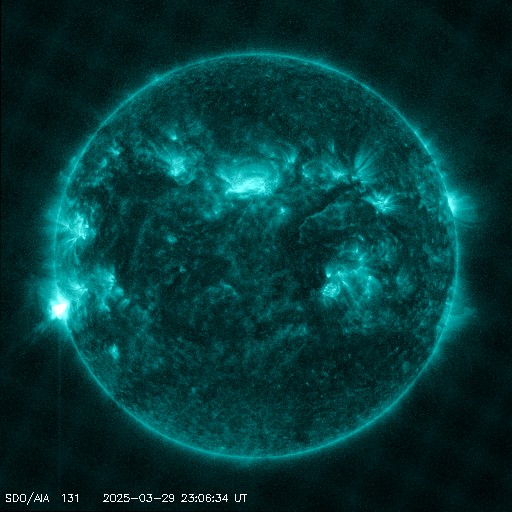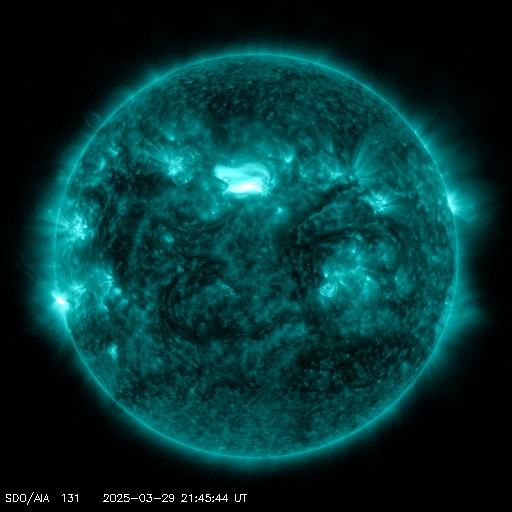More M-class solar flares, complex sunspot region 2297
Thursday, 12 March 2015 17:35 UTC
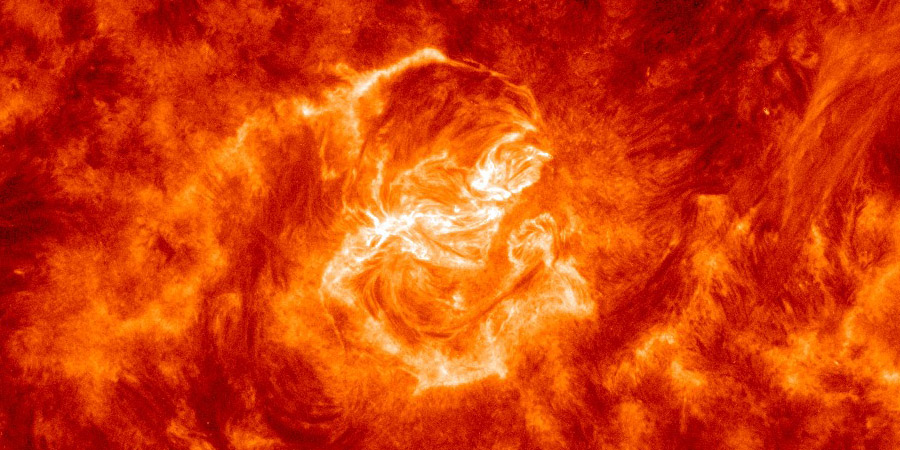
Another day of high solar activity. Star of the show is complex sunspot region 2297 that keeps on firing M-class solar flares on a regular basis. The M-class events of today so far have been an M3.2 solar flare at 04:46 UTC, M1.6 at 11:50 UTC, M1.4 at 12:14 UTC and M4.2 at 14:08 UTC.
None of these events look to have been very eruptive if we take a look at them on imagery from SDO but the release of some plasma might have occured following some of these solar flares as based on a couple of Type II and IV radio sweeps that have been reported by the NOAA SWPC.
There is however one major link missing in the chain which is vital to provide you with information about any resulting coronal mass ejections: there is a severe lack of coronagraph imagery from SOHO. Not only do we not have any data from today apart from only two frames, we still do not have any data from the X2.2 event that took place yesterday. Explanation for this lack of data is that SOHO is currently in a point in it's orbit around L1 that limits the amount of data it can send back to our planet. The scientists over at the SOHO website have an excellent article explaining why we are getting so little data right now.
There could thus very well be an unknown numbers of coronal mass ejections on their way to Earth. As a result, the NOAA SWPC have issued a minor G1 geomagnetic storm watch for this coming Friday and Saturday. Should LASCO coronagraph imagery become available and show one or more earth-directed coronal mass ejections, we will of course inform you about it.
Sunspot region 2297
Sunspot region 2297 continued to develop during the past 24 hours and we can report that it again increased in magnetic complexity. While the western sunspot cluster is drifting apart a bit more to the west, it's the sunspot mass near the large trailer spot that takes all our attention right now and here we find the key for more strong solar flares.
A small positive polarity sunspot is developing and trying to dig itself trough the surrounding negative polarity delta spots (which already are tightly packed with the large trailer spot) already present there. This feature could put so much stress on the group that is very well could fire another strong solar flare even though the background X-ray flux is now falling back into B-class. Don't let it fool you!
The potential for more solar flares from this sunspot region is still very high with M-class solar flares being very likely and a fair chance for another X-class event. Sunspot region 2297 is now directly facing Earth and any eruptions will likely come towards Earth. Now that it is transiting the central meridian, a solar radiation storm will also be more likely to occur following a major eruption.
M-class flare probability for the coming 24 hours: 90% chance
X-class flare probability for the coming 24 hours: 40% chance
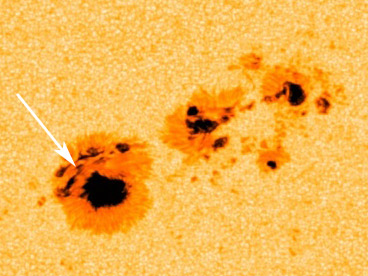
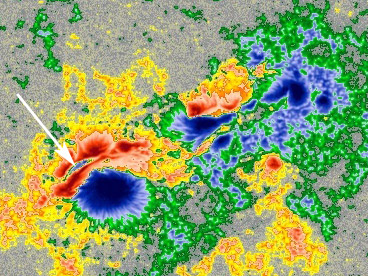
Images: Sunspot region 2297 as seen by SDO. The arrow indicates the positive polarity sunspot that is appearing among the trailing delta spots.
Video: The development of sunspot region 2297 during the past 7 days as seen by SDO.
Thank you for reading this article! Did you have any trouble with the technical terms used in this article? Our help section is the place to be where you can find in-depth articles, a FAQ and a list with common abbreviations. Still puzzled? Just post on our forum where we will help you the best we can!
Latest news
Latest forum messages
More topicsSupport SpaceWeatherLive.com!
A lot of people come to SpaceWeatherLive to follow the Sun's activity or if there is aurora to be seen, but with more traffic comes higher server costs. Consider a donation if you enjoy SpaceWeatherLive so we can keep the website online!

Latest alerts
02:09 UTC - Solar flare
Moderate M1.54 flare from sunspot region 4048
01:42 UTC - Radio Blackout
Minor R1 radio blackout in progress (≥M1 - current: M1.24)
Saturday, 29 March 2025
23:21 UTC - Solar flare
Moderate M1.91 flare from sunspot region 4048
22:51 UTC - Radio Blackout
Minor R1 radio blackout in progress (≥M1 - current: M1.1)
21:57 UTC - Solar flare
Moderate M1.45 flare from sunspot region 4048
Space weather facts
| Last X-flare | 2025/03/28 | X1.1 |
| Last M-flare | 2025/03/30 | M1.5 |
| Last geomagnetic storm | 2025/03/27 | Kp5 (G1) |
| Spotless days | |
|---|---|
| Last spotless day | 2022/06/08 |
| Monthly mean Sunspot Number | |
|---|---|
| February 2025 | 154.6 +17.6 |
| March 2025 | 127.5 -27.1 |
| Last 30 days | 127.5 -24.7 |



